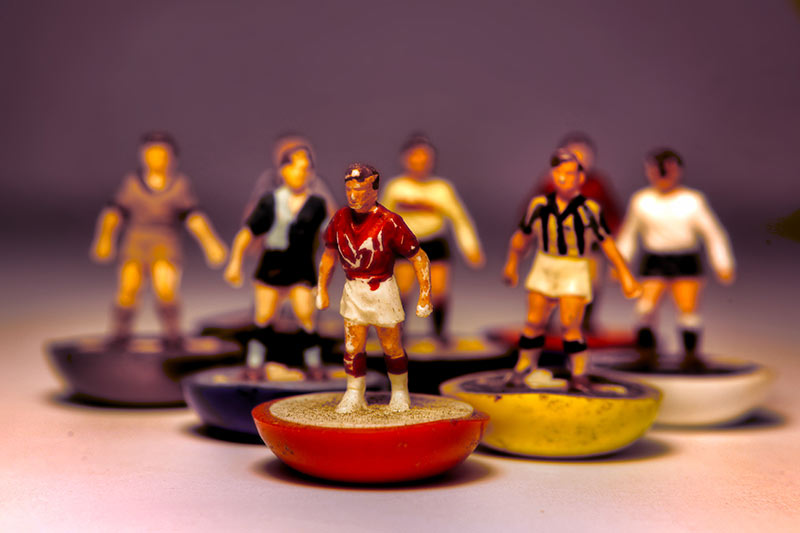Subbuteo
20th August 2024
20th August 2024

Did you know that Tunbridge Wells is the birthplace of a global sensation: Subbuteo? This beloved tabletop football game, known and played by millions, has a fascinating history that is intertwined with the local area.
Subbuteo was created in 1946 by Peter Adolph, an ornithologist from Langton Green, a village near Tunbridge Wells. Adolph was inspired by the earlier game Newfooty, which was popular in the 1920s and 1930s. However, after failing to secure the rights to Newfooty, Adolph decided to develop his own version, which would eventually surpass its predecessor in popularity.
The game was initially marketed as “The Hobby,” but Adolph wanted a more distinctive name. Drawing on his background in ornithology, he chose “Subbuteo”, inspired by the Latin name for the Eurasian hobby bird of prey, Falco Subbuteo. Thus, a legend was born in Tunbridge Wells.
The first Subbuteo sets were handmade by Adolph in his spare time. The initial kits included cardboard cutouts of players, wire goals and a piece of chalk to mark out the pitch on any flat surface. These early kits were simple, but they quickly captured the imagination of post-war Britain, offering an affordable and engaging way to enjoy the beautiful game indoors.
Despite the scarcity of resources in the immediate post-war years, Adolph’s creation struck a chord with the public. By 1947, the game was being mass-produced, and sales skyrocketed. Subbuteo’s rise coincided with the growing popularity of football in Britain, making it the perfect game for fans eager to replicate their favourite matches at home.

The 1960s and 1970s are often regarded as the golden era of Subbuteo. During this period, the game underwent significant improvements, with the introduction of three-dimensional, hand-painted plastic figures replacing the original flat cardboard players. This change brought the game to life, allowing players to feel more immersed in the action.
As Subbuteo grew in popularity, the range of available teams, accessories and pitches expanded dramatically. By the 1970s, there were hundreds of teams from around the world available, each meticulously painted to reflect their real-life counterparts. From Manchester United to AC Milan, fans could create their own dream matchups with astonishing accuracy.
In addition to football, Subbuteo branched out into other sports, including cricket, rugby and even hockey. However, it was football that remained at the core of the brand, driving its success and establishing it as a cultural icon.
Subbuteo wasn’t just a British phenomenon; it became a global game. By the 1970s, the game was being exported to over 50 countries and international tournaments began to take shape. The Subbuteo World Cup, first held in 1970, attracted players from around the world, further cementing its status as a worldwide sporting pastime.
Tunbridge Wells, the game’s birthplace, has embraced its connection to Subbuteo. Visitors to Tunbridge Wells can explore the area and imagine the origins of a game that has brought joy to millions over the decades.

The 1990s saw a decline in Subbuteo’s popularity, as video games and other forms of digital entertainment became more prevalent. However, Subbuteo never disappeared. The game’s nostalgic appeal has ensured its continued presence in the market, and in recent years, it has experienced a resurgence.
This revival has been driven by a combination of factors, including the growing interest in retro games, the enduring appeal of tactile, hands-on gaming experiences and the sense of community fostered by Subbuteo enthusiasts around the world. Collectors and players alike have kept the game alive, with tournaments, clubs and online communities thriving.
Modern Subbuteo sets blend the classic charm of the original game with contemporary improvements. The figures are more detailed, the pitches more realistic, and there are even digital elements, such as apps and online leagues, that complement the traditional gameplay.
Today, The Pantiles is a hub of culture, history and entertainment in Tunbridge Wells, and its connection to Subbuteo adds another layer to its rich heritage. Visitors to The Pantiles can not only enjoy its vibrant events and beautiful architecture but also take pride in knowing that they are in the birthplace of a game that has captivated generations.